Platystemon californicus, Creamcups
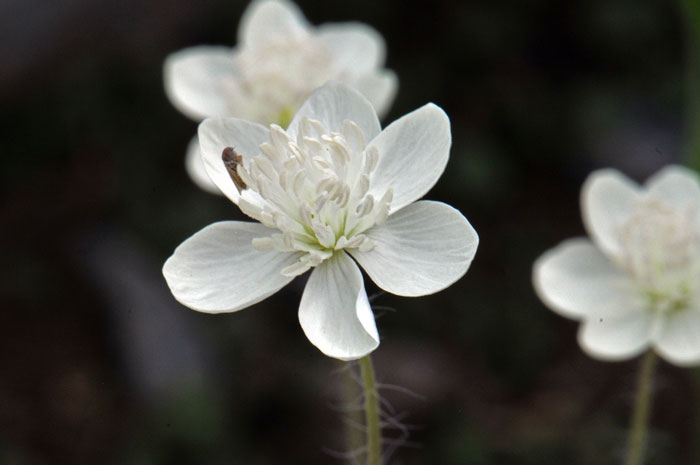
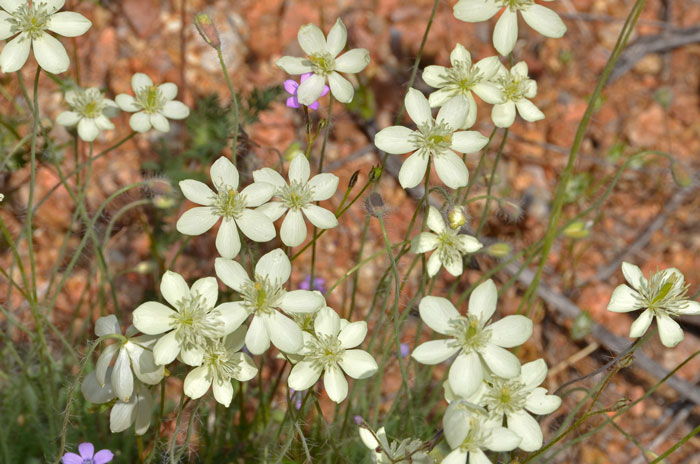
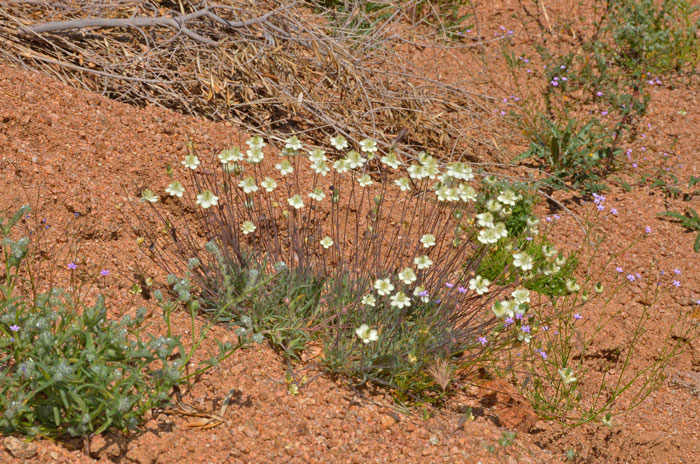
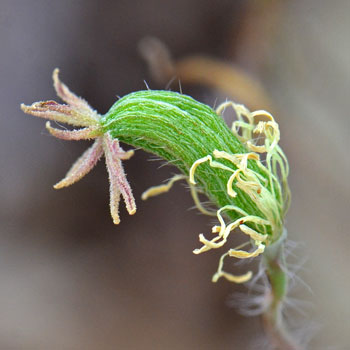
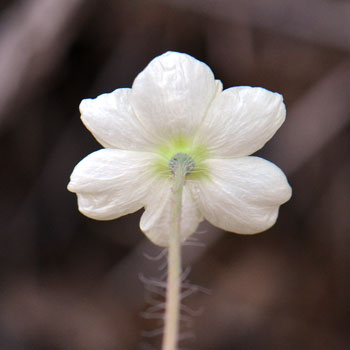
Scientific Name: Platystemon californicus
Common Name: Creamcups
Also Called: California Creamcups, Cream Cups
Family:
Papaveraceae or Poppy Family
Synonyms: (Platystemon arizonicus, Platystemon californicus var. californicus, Platystemon californicus var. ciliatu, Platystemon californicus var. crinitus, Platystemon californicus var. horridulus, Platystemon californicus var. nutans, Platystemon californicus var. ornithopus, Platystemon confinis, Platystemon mohavensis Greene)
Status: Native
Duration: Annual
Size: Up to 12 inches more or less.
Growth Form: Forb/herb; multiple erect stems with soft, shaggy hairs, sap colorless.
Leaves: Green; basal and cauline opposite, mostly linear some lanceolate.
Flower Color: White, cream and rarely yellow; flowers showy, attractive stamens (12 or more) often with flattened filaments; solitary, terminal with long peduncles; 6 petals, 3 sepals; fruit a capsule with brown seeds.
Flowering Season: March to May in Arizona, California and Texas.
Elevation: 1,500 to 4,500 feet, below 3,000 feet in California.
Habitat Preferences: Wet or moist ground often around or near streams, sandy soils and rocky hillsides.
Recorded Range: Creamcups are found in the southwest United States in AZ, CA and UT. In Arizona it grows in the central and western parts of the state with few records in Yuma county. It is found throughout much of California and in extreme southwest Utah. From this distribution it appears likely that, at least small populations, also occurs in southern Nevada. It is also native to Baja California and possibly northwest Mexico.
North America & US County Distribution Map for Platystemon californicus.
U.S. Weed Information: No information available.
Invasive/Noxious Weed Information: No information available.
Wetland Indicator: No information available.
Threatened/Endangered Information: No information available.
Genus Information: Plants.usda.gov lists 1 species and 1 accepted taxa overall in Platystemon.
The Plant List includes 2 accepted species names names of species rank for the genus Platystemon.
Comments: Creamcups is a delicate beauty adorning desert lands often near wet or moist areas particularly near running water.
Platystemon californicus was used for food, as a vegetable by the Mendocino. See ethno-botanical uses at Native American Ethnobotany, University of Michigan, Dearborn.

